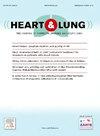The rapid shallow breathing index (RSBI) as a predictor for extubation success in medical and surgical ICU patients: A retrospective cohort study
IF 2.4
4区 医学
Q2 CARDIAC & CARDIOVASCULAR SYSTEMS
引用次数: 0
Abstract
Background
Endotracheal intubation and mechanical ventilation comprise common life support interventions for patients in intensive care units (ICUs). Premature or delayed extubation increases the risk of morbidity and mortality. Despite following weaning protocols, 10–20 % of patients fail extubation within 48 h. To improve extubation success, predictors such as the rapid shallow breathing index (RSBI–the ratio of respiratory rate to tidal volume) are needed. The current RSBI value (<105 breaths/min/L) comes from clinically outdated methods and small samples.
Objective
To identify the highest-performing RSBI threshold value associated with extubation success using current weaning protocols in a large sample of medical and surgical ICU patients.
Methods
Using secondary data from hospital records, receiver operating characteristic (ROC) analysis of the RSBI, measured immediately after a spontaneous breathing trial, was conducted for 1313 mechanically ventilated (≥ 48 h and ≤ 21 days) patients at one hospital in Saudi Arabia.
Results
The sample of 61.5 % medical and 38.5 % surgical patients included 65 % males with a mean age of 53 years and an extubation failure rate of 12 %. Ideal RSBI threshold values differed by medical and surgical samples. For each sample, the area under the ROC curve approximated 0.5 for the RSBI, and multivariable logistic regression identified a unique set of physiologic parameters to predict successful extubation.
Conclusion
The RSBI alone demonstrated low diagnostic performance for predicting successful extubation using current weaning protocols. However, results suggest needed updates for RSBI threshold values in current weaning protocols to optimize RSBI use with other predictors for extubation success.
求助全文
约1分钟内获得全文
求助全文
来源期刊

Heart & Lung
医学-呼吸系统
CiteScore
4.60
自引率
3.60%
发文量
184
审稿时长
35 days
期刊介绍:
Heart & Lung: The Journal of Cardiopulmonary and Acute Care, the official publication of The American Association of Heart Failure Nurses, presents original, peer-reviewed articles on techniques, advances, investigations, and observations related to the care of patients with acute and critical illness and patients with chronic cardiac or pulmonary disorders.
The Journal''s acute care articles focus on the care of hospitalized patients, including those in the critical and acute care settings. Because most patients who are hospitalized in acute and critical care settings have chronic conditions, we are also interested in the chronically critically ill, the care of patients with chronic cardiopulmonary disorders, their rehabilitation, and disease prevention. The Journal''s heart failure articles focus on all aspects of the care of patients with this condition. Manuscripts that are relevant to populations across the human lifespan are welcome.
 求助内容:
求助内容: 应助结果提醒方式:
应助结果提醒方式:


